The First Locomotive for the First Railway
Welcome to part two of our Ontario, Simcoe & Huron Railway (OS&H) series! You can find part one here. As Toronto’s first railway, the Ontario, Simcoe & Huron would operate the first made-in-Canada locomotive: “Toronto”. That is to say, named for the city it was built in, this iconic locomotive was manufactured in what is today’s downtown core.
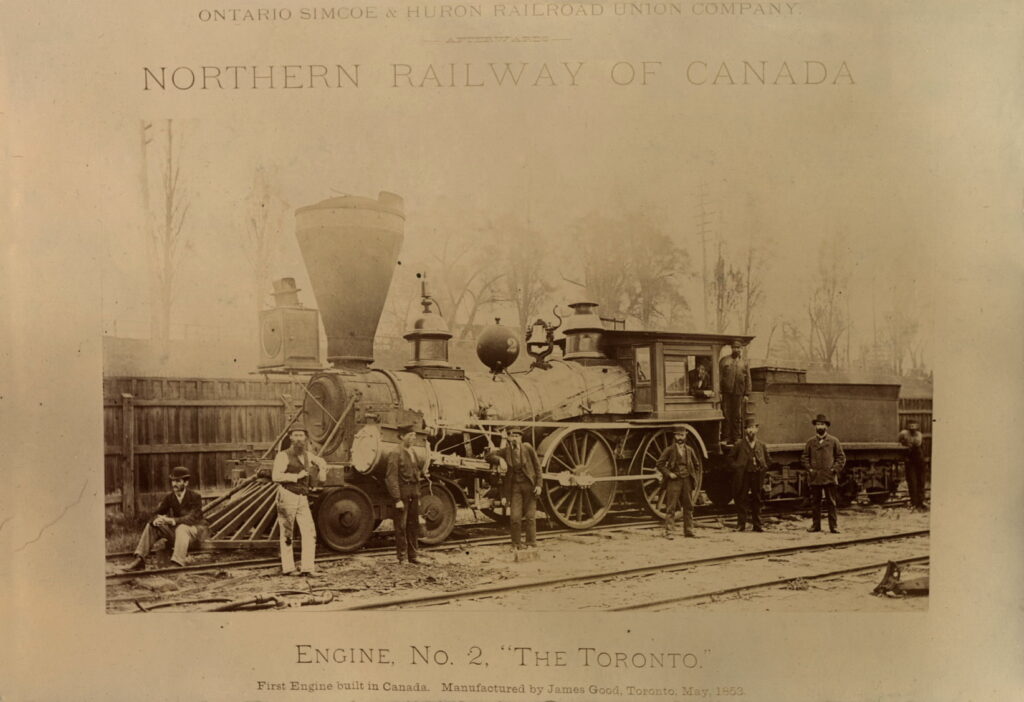
A Company of Firsts
The beginnings of the OS&H would lead to the production of the first steam locomotive built by the Toronto Locomotive Works, fittingly named “Toronto”, in 1853. Before 1853, locomotives in Upper Canada had to be imported from Great Britain or the United States. Locomotives were hard to come by in Canada, most of them being shipped overseas from Britain.
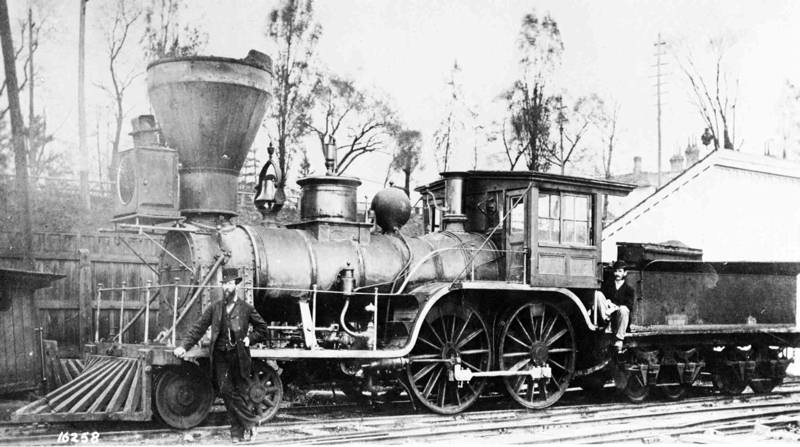
The first locomotive of the OS&H was named the “Lady Elgin”, built in Portland, Maine and shipped up the St. Lawrence River to Toronto. It was mostly used in construction work on the Ontario, Simcoe & Huron Railway. However, the costs incurred from shipping and customs duties were disheartening, and the OS&H began searching for alternatives.
Building the Locomotive Called Toronto
Meanwhile, a local foundry owner named James Good saw the need for domestically-built locomotives, and he promptly founded the Toronto Locomotive Works. The Toronto Locomotive Works (TLW) foundry was established at Yonge and Queen Streets, approximately where St. Michael’s Hospital is today.
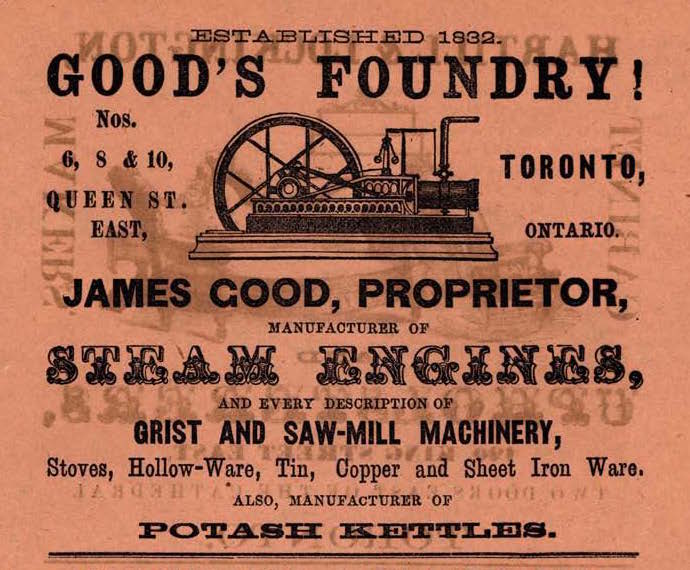
The TLW completed their first locomotive for the OS&H on April 16th, 1853. In short, it was the first locomotive built in Canada and was named “Toronto” after the city it was built in.
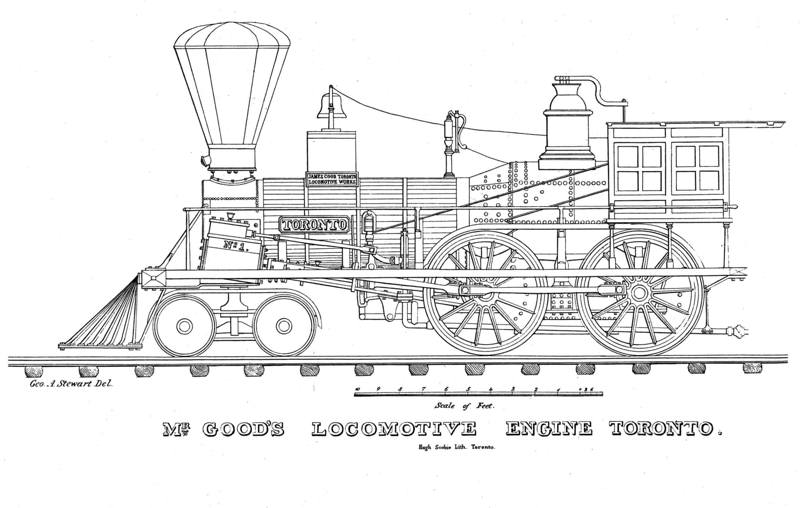
Toronto’s Big Move
The locomotive called Toronto weighed 30 tonnes and the four driving wheels were five and a half feet in diameter. On April 18, “Toronto” was moved outside of the locomotive foundry onto Queen Street for display to an appreciative public. The spectators came from all over the city and surrounding area to see it. However, the Toronto would have a difficult journey ahead of it: getting the locomotive to the railway through several city streets.

The 30-tonne locomotive was moved by laying track relay-style in 100-foot intervals through the city. Simultaneously, the locomotive would be pushed forward along the track. This laborious process occupied almost a week, much to the fascination of Torontonians who had never seen such an enormous machine. Therefore, the journey wasn’t complete until April 26th. After that, the railway began allowing their engineers to become familiar with it before it began revenue service.

The Toronto Locomotive Makes History
Above all, the most historic day in Toronto’s railway history was May 16th, 1853. The OS&H began revenue service, running a train over the complete section of line between their station in Toronto and Machell’s Corners. The OS&H wooden depot was located close to where the eastern entrance to Union Station is today. Most importantly, the train was pulled by none other than “Toronto”, with four cars in tow. One year later, Machell’s Corners was renamed Aurora.
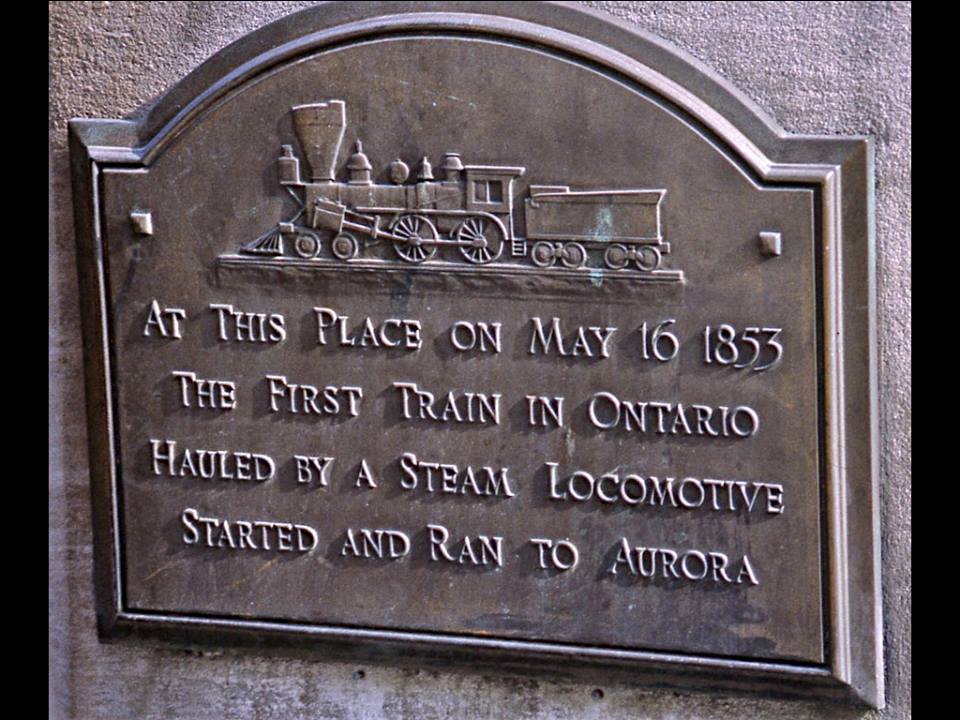
The Toronto Locomotive Works was seriously hindered by its inconvenient location a mile north of the rail corridor. After unsuccessfully trying to relocate to the waterfront, the TLW abandoned the railway business in 1859 after building 23 locomotives. “Toronto” was scrapped in 1881. The last remnants of the Toronto Locomotive Works disappeared in 1909 with the arrival of the Bank of Montreal building on the corner of Queen and Yonge Streets.
Toronto’s Legacy
The locomotive called Toronto’s legacy lives on today as the first built-in-Canada engine. In 1953, a plaque was erected at Toronto Union Station to commemorate the OS&H’s first passenger train to depart Toronto. Additionally, a special train ran along the original OS&H route that same year to commemorate the same run 100 years earlier.
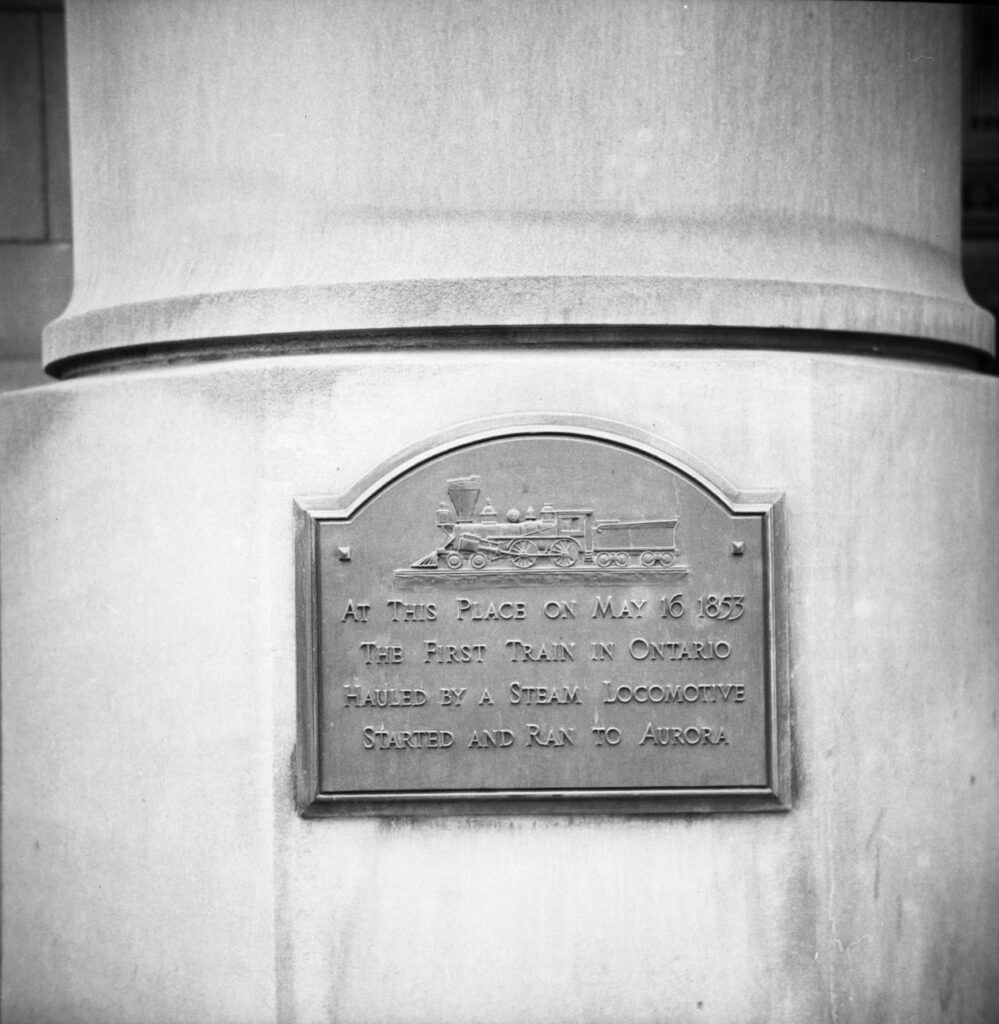
In 1983, Canada Post marked the centennial of The Last Spike with a series of railway-themed postage stamps. The Toronto locomotive was featured on its own stamp due to its significance as the first locomotive manufactured in Canada West (now Ontario).


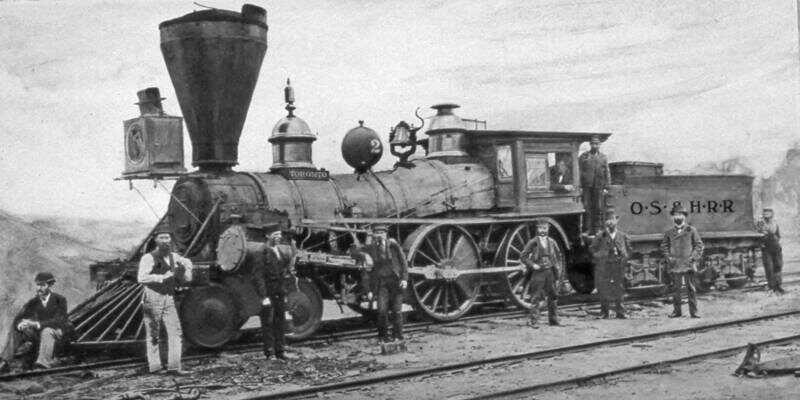
In the section “A Locomotive Called Toronto”, there is one photo of ten identified workers in front of the Toronto. Were they connected with the James Good’s foundry? If so, what were their occupations?
Thank you.